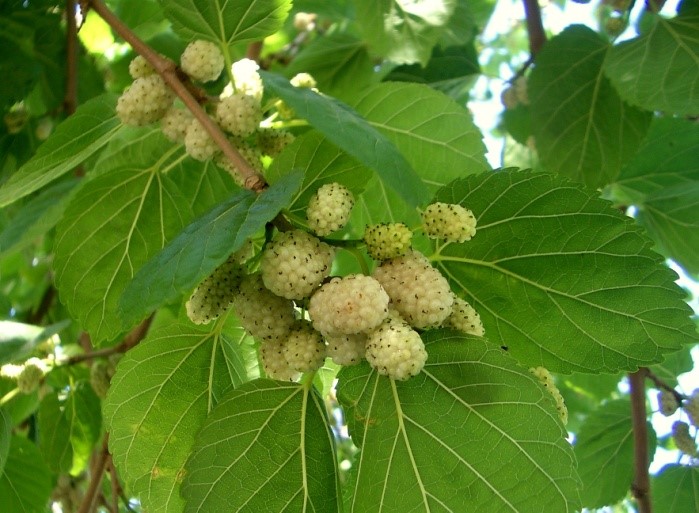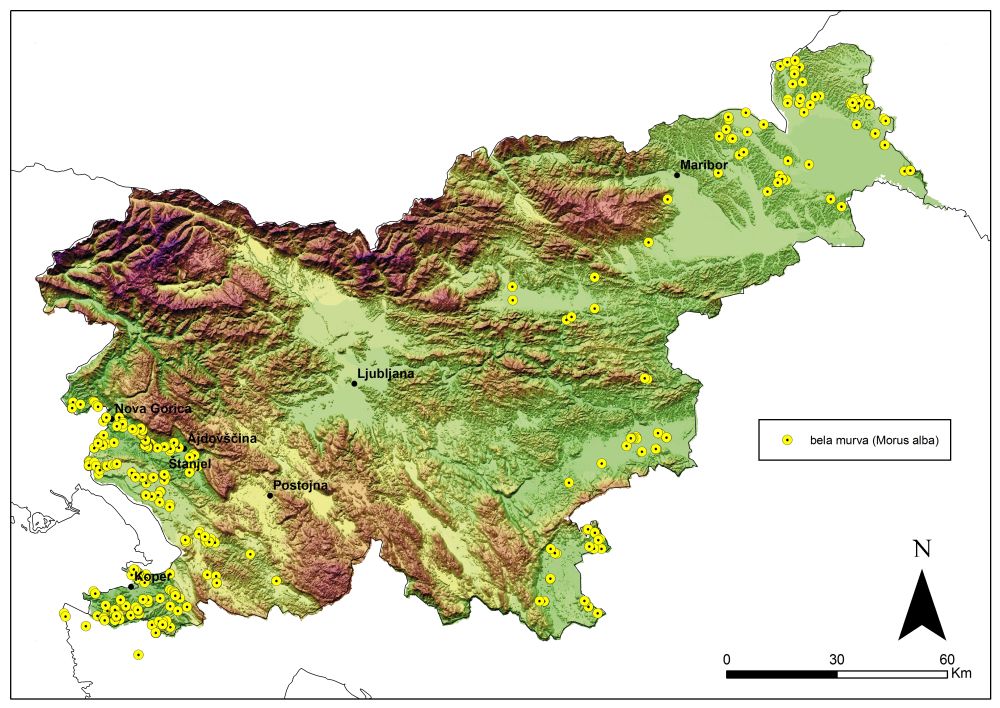White mulberry origins from south and south-western China where it has been widely cultivated for more than 4500 years. It was brought to Europe in the 11th century for silkworm’s feed. The white mulberry is more adaptable to pruning, has smoother and softer leaves and it is therefore more suitable for sericulture compared to the black mulberry. Silkworm catterpillars were called „chevalieres“ by the local people, probably because of their erect, rigid pose during the moulting phase.
Today white mulberry trees can be found all over the Europe, especially in souhtern former silk-producing countries. In Slovenia the white mulberry is the most abundant at the coast, in Karst region, near Gorica, Vipava valley, Bela krajina, Lower Carniola near Brežice and in Prekmurje region. In Styria it was cultivated until the 2nd world war near Žalec.

Photo: Johannes Rabensteiner
White mulberry (Morus alba L.) is a deciduous tree which grows up to 18 m tall. The crown is bright, circular and sparse. Its trunk is short and knotted, bark is redish-brown to greenish-grey. Young shoots are yellow-grey, shiny and hairy at first, later hairs are lost. The leaves are simple and two or more lobed. Phenomenon when the leaves on one plant differ in shape and size is called heterophylly. Tendency to lobed leaves development depends on genotype as well as on age of leaves and shoots. Simple leaves more commonly appear on older branches. The key determination characteristic is presence of hairs only on the leaf vessels on the lower side of leaf. The flowers of the white mulberry are single-sex catkins and they bloom in May. Male and female flowers are usually on seperate trees although they can occur on the same tree. Male flowers are merged in yellow hanging catkins with 4 stamens while woman flowers are merged into erect eye-shaped inflorescences. The colour of fruits varies from white to pink, rarely to dark red.

Photo: Polona Sušnik
The mulberry appears in family symbolism. The mulberry tree was traditionally planted by the house at the wedding or after the childbirth. As a fruit tree it was often planted next to barns, as hedges between fields, wineyards, next to roads and ruts. The mightiest Slovenian white mulberry and at the same time the widest fruit tree is Fabiani’s mulberry at the Fabiani homestead in Kobdilje. It has more than 650 cm of circumference. There are some beautiful mulberry avenues in Lokev, next to Školj castle at the Famlje village and by the monastery on Krog near the village of Sečovlje. In Bela krajina the oldest mulberry tree still grows in Adlešiči, while the whole mulberry avenue by the Turn castle in Dragatuš was cut down and sold to Brda for wooden casks.

